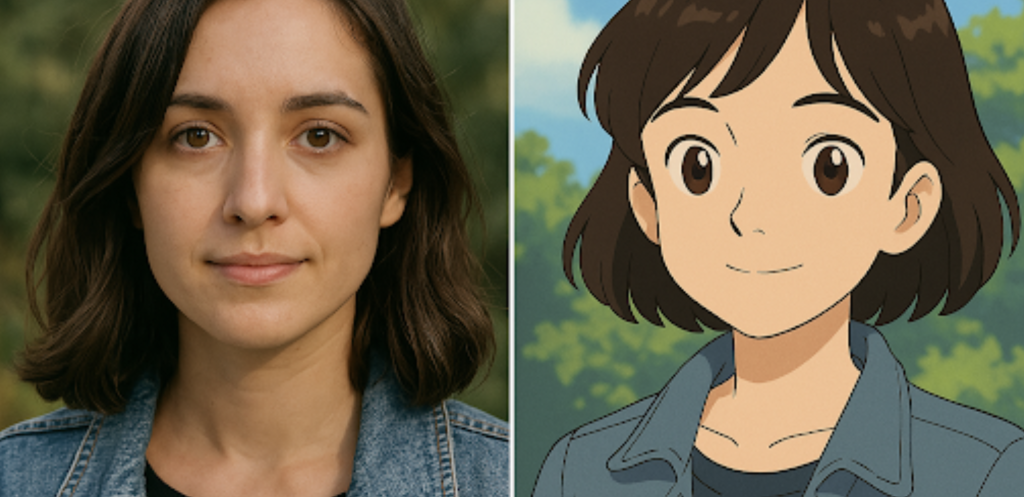
This image was created using the DALL·E model. It does not depict a real person.
In a world where AI tools are advancing rapidly and becoming more widespread, barely a week goes by without a new trend lighting up social media. The latest craze? Turning your selfies into illustrations inspired by the iconic style of Studio Ghibli — the famed Japanese animation studio behind beloved films like Spirited Away and My Neighbor Totoro. With just one click, you can see yourself transformed into the hero of a whimsical anime world.
But like most digital trends, there’s always more happening behind the scenes.
While the Ghibli aesthetic may be the most popular, users have been experimenting with other styles too; from The Simpsons and Pixar to Disney and even games like Minecraft. The fun is endless, and creativity knows no bounds. But…
Each time you upload a photo, a significant amount of data is collected, stored, and potentially used later to train AI models.
According to The Economic Times, tools like the new version of ChatGPT (which uses the GPT-4o model) can now generate images in specific art styles like Ghibli’s, using just a personal photo and a few tailored instructions. What many users don’t realize is that uploading a photo often means agreeing to terms of use that grant the company rights to retain and utilize the image for development and improvement purposes.
Privacy expert Louisa Garofsky warns: “The photo you uploaded today for fun could be used tomorrow to train a system you know nothing about, and without any control from your side.”
Each time you upload a photo, a significant amount of data is collected, stored, and potentially used later to train AI models.
That depends on where you live. In the European Union, data usage is tightly regulated by laws like the GDPR. But in many other countries, companies get by with vague statements in their terms of service like “We use your data to improve our services”, a phrase that can be interpreted in many ways and sometimes exploited.
A report published by The Hindu Business Line pointed out that many users don’t realize that uploading just one photo may give a tool “long-term permission” to store and analyze it, opening the door to undisclosed future uses.
The final image may look cute and harmless. But the data behind that image can be a goldmine for AI models. Every photo can reveal information about your facial structure, estimated age, skin tone, even emotions and expressions. This kind of visual data helps companies develop models that can “understand” faces and interact with them more precisely.
You don’t need to avoid every new tech or run from every trend. But a few simple steps can help protect your privacy:
Read the terms of use, especially the section about data.
Avoid uploading photos of your kids or people who haven’t given you permission.
Use tools that clearly state they don’t store your photos.
Ask yourself: Does this platform offer me the option to delete my data later?
In a world driven by algorithms and a race for data, we need to be more mindful of what we share. That cartoon image might seem like harmless fun now but remember, AI doesn’t forget. Every digital share leaves a trace.
Don’t let privacy be the price of entertainment… Some trends carry more than meets the eye.